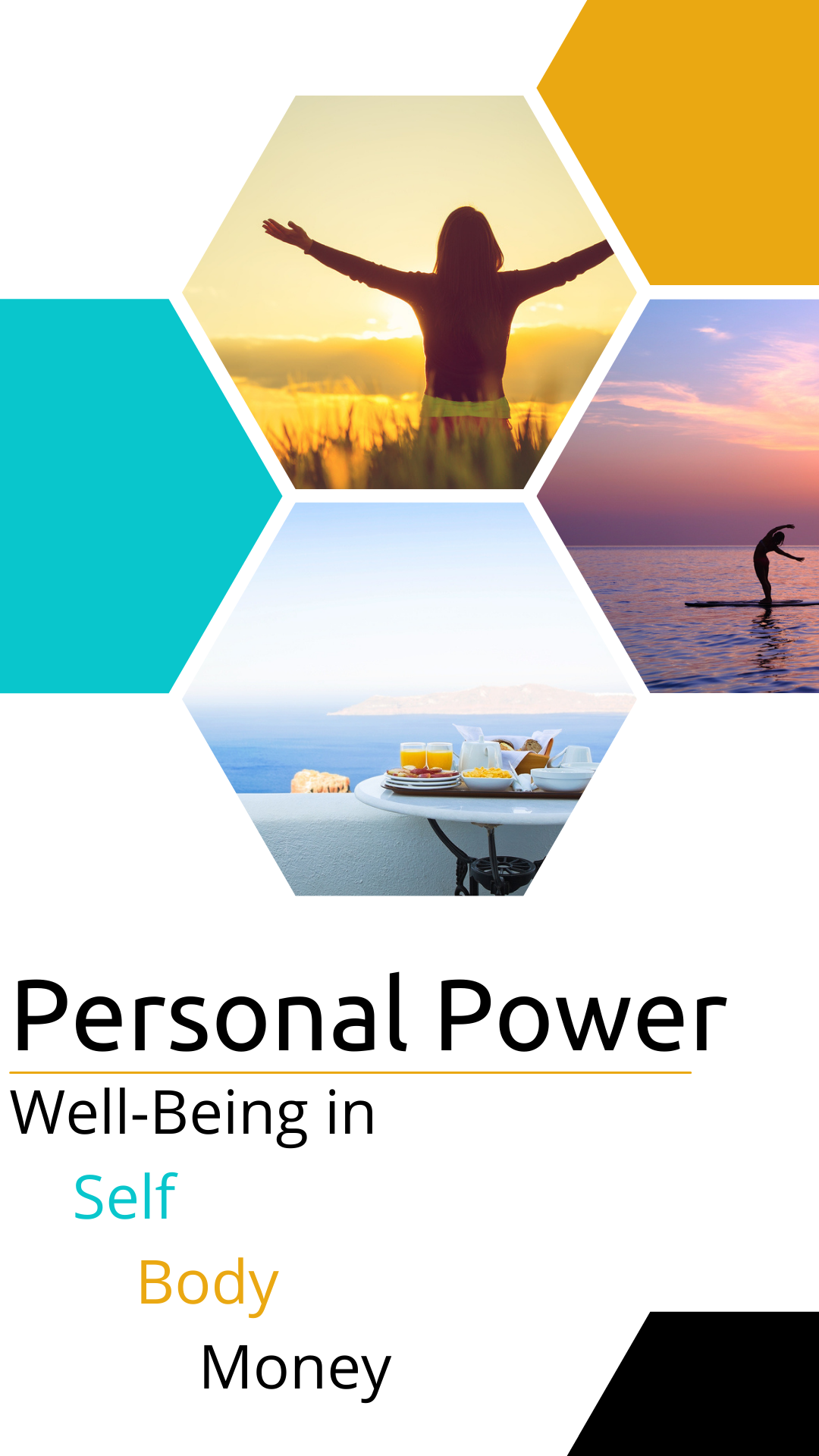
Why External Changes May Not Give You the Results You Crave
KEY TAKEAWAY: While changing our external circumstances can seem a tempting fix to what we are unhappy about in our lives, change begins within ourselves. So, before making a big change on the outside, consider what changes to make on the inside that will support lasting change and greater well-being and fulfillment. Scroll down to the TAKE ACTION section for this week’s actionable steps.
Have you ever dreamed of moving away to a new location, thinking that doing so would solve most of your current problems?
As someone who has lived in eight different countries spanning two decades, I know the lure of going to a new place, of the promise of starting over with a clean slate. It can give you the sense that by moving on, all the things you may not like in your current situation will go away in your new one.
We can have that same belief when it comes to our partners, jobs, or some other area of our lives where we are not feeling the way we want to feel and believe that making the big change we are considering will resolve that.
Unfortunately, that is often not the case because, as the adage goes:
“Wherever you go, there you are.”
I love the analogy attributed to Brendan Burchard, which conveys a great image of this. It compares people’s lives to a field of half-dug holes, where people take a shovel and dig holes in search of wealth, happiness, and fulfillment, only to abandon their half-dug holes to start digging in new spots when they don’t get the results they want.¹

In my book, I label this “Not-Enoughness” — where something or someone (including ourselves) — is not enough or good enough, and I liken attempting to fill our “Enoughness” cup from the outside to trying to fill a cup full of holes. We can find ourselves in an endless search, moving from one person, situation, or temporary feel-good fix to another — so many half-dug holes¹ — because we don’t find what we are looking for. We don’t achieve how we want to feel.
So, while changing our location, partner, job, or other area of our life may be very tempting because it seems to be the solution we seek, if we don’t start by making a change on the inside, we’ll likely find that no matter what change we make on the outside, we take all our internal baggage with us to the new situation and end up feeling the same.
WHAT NEEDS TO CHANGE?
I think one reason it’s so easy to search for solutions in our conditions — our work, our partner, our location, etc. — is because it can be so difficult to try to find one inside of ourselves. It’s much easier to blame our discontent — our sense of not-enoughness — on something outside of us because we can’t or don’t want to see what it may be about ourselves that plays a role in it.
So, we can say we’re not happy because our partner is difficult or not affectionate enough, and we think a new partner will make us feel more like we want to feel.
We can say that we aren’t fulfilled because we don’t like our job, and we will feel more fulfilled when we change it.
We can say we are stressed because our environment is too chaotic, and we’ll feel less stressed and more peaceful when we move away to a new place.
And here’s the thing: It may very well be that changing our partner, our job, or our location is part of the solution, that it may help us feel more of how we want to feel.
But — and this is a big but — what I have found personally and professionally is that if we are not a part of whatever change we make, we will more than likely end up feeling the same way with our new partner, new job, and new location.
In other words, change starts inside of ourselves. And that really boils down to changing our choices because our choices are what led us to where we are now — to our partner, our job, our location, and our current conditions.
We are where we are because of the choices we have made.
They may have been choices we feel we had to make. We may have felt that there were no other options available to us. However, big or small, intentional or unintentional, or by action or as a result of inaction, ultimately, we made choices and those choices created where we are right now.
RECOGNIZING THE COMMON DENOMINATOR
I had a client who was upset about a few situations in her life, which she described to me in detail. From my perspective, it was clear to see my client’s role in each. She was the common denominator in all three. However, she couldn’t see that at all. She couldn’t take responsibility for her role in creating the situation because she wasn’t able or willing to see it.
It could be surprising, except that I have done the same: Facing certain situations that I didn’t like for one reason or another and not wanting to recognize that the common denominator was ME.
And many of us do this.
We react by defending ourselves — our egos — because it is more comfortable than accepting that we may be part of the problem. Mea culpa is not easy to own because with it comes guilt and other emotions that we prefer not to feel. It is far easier to avoid owning the role we play in our lives even though we are the ones living them and shaping them based on the choices we make.
So, when you are viewing the areas of your life where you don’t feel how you want to feel, ask yourself:
“What is the common denominator?”
“What role am I playing in this?”
THE MOST POWERFUL CHOICE YOU CAN MAKE
One of the most pivotal changes we can make is to be intentional about choosing the lens through which we view life. For me, it is the most powerful choice.
How we choose to view life — our life, different situations, other people, ourselves — guides everything. The filter through which we perceive — and, in truth, judge — everything that happens and is in our lives — again, that includes ourselves — becomes our reality. It influences everything that we say or do (or don’t say or do). It determines our choices, which shape our lives.
So, start by checking the lens through which you view your life and everything in it, including yourself. Awareness is the first step toward positive change in any area of our lives, so start building yours. I wrote more about this in What to Do When You Don’t Feel Good Enough, but you can start by doing the following:
Monitor your thoughts. Are they helping you create what you want and supporting how you want to feel? Or are they leading you to feel more negative, discontented, or whatever it is you are feeling?
Notice how your thoughts influence what you say or do (or don’t say or do). How is the way you view things in your mind influencing your behavior and choices, and is that helping you to achieve more of the outcomes you want and what you want to feel or sowing more of the seeds of what you don’t want?
For example, take relationships. It is oh too easy to get into patterns of thinking and, therefore, acting and reacting to our partner. I remember reading about one couple who was on the verge of divorce and making a last-ditch attempt at counseling. The husband felt his wife was emotionally unavailable, cold, and critical of him. However, he made a choice to start behaving toward her in the way he wanted her to behave towards him. He started being affectionate and saying positive things to her. Can you imagine what happened? His wife started to respond in kind.
Another example was of a woman who found herself really disliking her partner. She bristled at everything he did because it just reinforced her negative feelings towards him. But before calling it quits, she decided to write down four things she liked about her husband on a piece of paper. Things that had drawn her to him in the first place. Things that she could say something positive about even in the midst of her discontent around him.
She read the list every day, several times. It helped her because it made her focus more on the positives than the negatives. It made her act more lovingly toward him, which, in turn, meant he responded more positively to her. Today, they are well and thriving.
You might be reading those examples and thinking, well, that wouldn’t work in my situation. Maybe not. But have you tried it?
The lens we choose to view life and all the things and people in it influences everything we do or don’t say and do, and what we do or don’t say and do creates a reaction. An outcome. Often, a consequence.
So, take a step back and view your thoughts, how they influence all you do or don’t do, and what is created as a result. Try an experiment where you shift your lens to be more supporting of what you want to feel and have in your life. Let it guide more positive actions. Notice what happens.
Journal about what you notice. What insights have you gained? If you don’t journal, I’d encourage you to start one. Journaling, or expressive writing about one’s thoughts and feelings, has received more attention over the years as research supports its mental and physical health benefits, including greater clarity, self-connection, and overall well-being.² It is a powerful mindfulness tool that supports positive change in all areas of your life because it helps you gain perspective and can highlight patterns that may keep you stuck in an area of your life that you want to address.
DO YOU NEED TO CHANGE HOW YOU VIEW YOURSELF?
Many times we stay stuck in an area of our lives because we don’t feel we can change. That is of course the entire focus of The Personal Power Program and work because feeling empowered in our lives is critical. Feeling powerless is one of the worst things we can feel, and it is generally not just debilitating but destructive. Inside and/or out.
We can feel powerless for many different reasons, but one of them is limiting beliefs we have about ourselves, where we don’t feel enough or good enough in some way. We don’t feel we can achieve how we want to feel or live because of a story we believe about ourselves and what we can or can’t have or do.
So, what about you?
Is there an area of your life where you are held back because of some story you believe about what you can or can’t do or be? Again, journaling will come in handy here because you can write about different situations and, in doing so, may better be able to spot beliefs, stories, or labels that are limiting you in some way.
That awareness work is key because once you can recognize those beliefs, you can start to challenge them and adopt more supporting beliefs that shift you from what you think you can or can’t do, have, or be to what will help you take action, achieve, and become.
START WITH WHERE YOU ARE
In our daydreams about changes we are going to make that will solve whatever it is that we feel needs fixing in our lives, we can focus so much on that vision of promise and the gap between it and where we are that we don’t do anything because nothing gets us from here to there right now. In other words, we don’t start where we are.
Starting where we are means assessing where we are right now and then identifying what we can do to start moving in the direction we want. We shift from craving overnight change to owning our power to create change today with every choice we make.
So, in addition to making the important choice to monitor your thoughts and behavior and start doing the inner work that you need in order to think and do more of what will support how you want to feel and live, what else? What else can you adjust or choose to do differently to create the conditions that you want in yourself and your life? What changes can you start making to move you from where you are to where you want to be?
For example, if you are stressed because of not having time, etc., what can you change about your schedule or how you are using your time?
If you don’t feel good in your skin, what can you do to address that? Do you want to add more activity to your life, healthier food, meditation, a walk in the morning, a creative outlet, or something else to help you feel better?
If you are not happy with a relationship, what is the role you are playing in the relationship as it is and what can you do to help create the change you want?
Action is empowering. It provides the potential for change. Only you can choose to take action. You will never be able to control what and who is around you, but you do control yourself. That includes the choices you make. So, what choices can you make today to move closer to what you want?
TAKE ACTION:
Changing our external circumstances is generally not enough to create real change inside. To help you first create change on the inside, consider the following:
- What is it about your current situation that you don’t like, and can you recognize what role your own perspective, behavior, and choices have played in that?
- Monitor your thoughts. Are they helping you create what you want and supporting how you want to feel, or are they leading you to feel more negative, discontented, or whatever it is you are feeling?
- Notice how your thoughts influence what you say or do (or don’t say or do). How is the way you view things in your mind influencing your behavior and choices, and is that helping you to achieve more of the outcomes you want and what you want to feel or sowing more of the seeds of what you don’t want?
- Limiting Beliefs: Is there an area of your life where you are held back because of some story you believe about what you can or can’t do or be? How are they playing a role in your current situation?
- What else can you adjust or choose to do differently to create the conditions that you want in yourself and your life? What changes can you start making today to move you from where you are to where you want to be?
- Journal about your insights and use your journal to help you identify limiting beliefs, stories, or patterns of thinking and reacting that may be keeping you stuck.
References:
1: Robertson, Reese (2022, February 3). Your Life Changes with an Internal Shift, Not an External Switch: Why a different set of circumstances won’t solve your problems. Retrieved from https://reece-robertson.medium.com/your-life-changes-with-an-internal-shift-not-an-external-switch-24e06b87ec9
2: Journaling Research
Carpenter, Siri (2001). A new reason for keeping a diary. Research offers intriguing evidence on why expressive writing boosts health. Monitor. September 2001, Vol 32, №8. Print version: page 68. Retrieved from https://www.apa.org/monitor/sep01/keepdiary#:
Murry, Bridget (2002). Writing to heal. By helping people manage and learn from negative experiences, writing strengthens their immune systems as well as their minds. Monitor. June 2002, Vol 33, №6. Print version: page 54.
Rodriguez, Tori (2013, November 1). Writing Can Help Injuries Heal Faster. Expressive writing may lead to faster recovery from injury. Scientific American. Retrieved from https://www.scientificamerican.com/article/writing-can-help-injuries-heal-faster/
Smyth, J. M., Johnson, J. A., Auer, B. J., Lehman, E., Talamo, G., & Sciamanna, C. N. (2018). Online Positive Affect Journaling in the Improvement of Mental Distress and Well-Being in General Medical Patients With Elevated Anxiety Symptoms: A Preliminary Randomized Controlled Trial. JMIR Mental Health, 5(4), e11290. https://doi.org/10.2196/11290
IMPORTANT: The information provided is for educational and informational purposes only. It is not intended to be a substitute for professional advice, diagnosis, or treatment. Always seek the advice of a qualified professional with any questions you may have regarding the topics discussed here as the topics discussed are based on general principles and may not be applicable to every individual.
Leave a Comment below: Any insights, experiences or comments you’d like to share on this topic? I’d love to hear from you. Just hit “Comment” and share away!
Inspiration & information delivered to your inbox.
Receive FREE information, inspiration & support to help you feel more fulfilled, energized, and financially empowered in your life. Unsubscribe at any time.

0 Comments